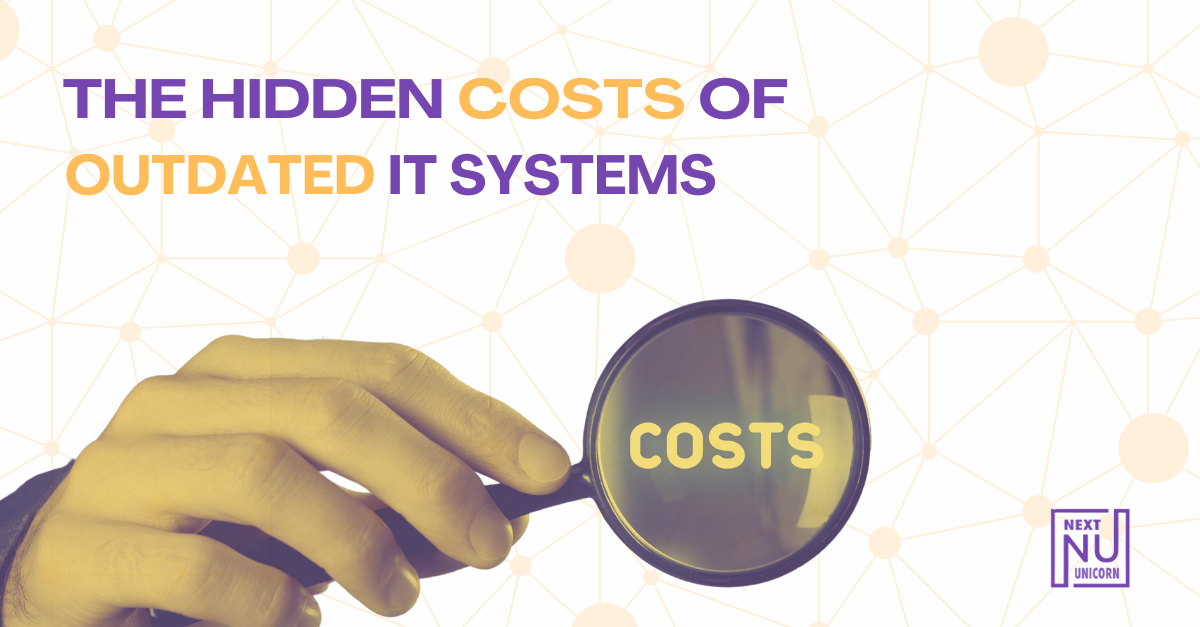Leaking Profits?
The Hidden Costs of Legacy IT

You know that feeling when an old system keeps breaking down, but fixing it seems easier than replacing it? Many businesses are stuck in that cycle, patching up legacy IT systems because a full upgrade feels too complicated, costly, or time-consuming. But while it might seem like the cheaper option in the short term, holding onto outdated systems often costs far more than modernising.
Hidden maintenance costs, inefficiencies, security vulnerabilities, and lost opportunities all add up. And the longer a business waits to upgrade, the bigger the risks become.
So, what’s the real price of sticking with legacy systems? And how can businesses modernise without massive disruptions?
The Hidden Costs of Legacy IT
Outdated systems don’t just create occasional frustrations—they have a direct impact on efficiency, security, and costs. Many businesses see IT as an expense rather than an investment, but failing to modernise can lead to far greater financial losses in the long run.
Maintenance & Support Costs Keep Climbing
It’s easy to think, “If it’s not broken, don’t fix it.” But outdated systems require constant patches, expensive maintenance contracts, and specialised support just to keep running. As software vendors phase out support for older technologies, businesses are forced to pay higher fees or rely on in-house teams to maintain aging systems.
And then there’s the downtime. Every unexpected outage means lost productivity, frustrated employees, and unhappy customers. Instead of waiting for a system failure to force an emergency upgrade, businesses can take a phased migration approach, starting with their most outdated or high-risk applications. This avoids major disruptions while ensuring a smooth transition.
Security Risks Increase with Every Year
Hackers love legacy systems. Older technology often lacks modern security features, making it an easy target for cyberattacks. Many legacy platforms don’t support multi-factor authentication, encryption, or real-time threat detection, leaving businesses vulnerable.
Regulatory compliance is another challenge. As new data protection laws emerge, businesses that fail to modernise risk legal penalties, reputational damage, and lost customer trust. Moving to cloud-based, secure-by-design infrastructure ensures continuous security updates, built-in compliance, and stronger protection against threats.
Outdated Systems Block Innovation & Growth
Beyond inefficiencies, legacy systems create barriers to innovation. Many businesses want to adopt AI, automation, and real-time analytics, but outdated infrastructure can’t support these technologies.
Instead of manually transferring data between disconnected platforms, modern IT solutions enable real-time data flow across applications. Middleware and API-driven integrations allow businesses to connect older systems with new cloud-based applications, extending the life of legacy platforms while removing data silos.
Frequent Downtime & Reliability Issues
As legacy systems age, they become more unstable and prone to failure. IT teams often struggle to find replacement parts, software patches, or engineers familiar with outdated technology, increasing the risk of downtime.
And when critical business systems go offline—whether due to a server crash, outdated software, or lack of integration—the result is missed opportunities, lost revenue, and frustrated customers.
By adopting scalable, cloud-based infrastructure, businesses gain higher reliability, automatic failover protections, and predictive maintenance to prevent unplanned downtime before it happens.
Why Waiting Costs More in the Long Run
Many businesses hold off on modernising because they’re concerned about costs, disruption, or complexity. But the reality is, the longer companies wait, the more difficult—and expensive—the transition becomes.
Older systems require increasingly complex workarounds just to keep up with business needs. Teams rely on manual processes, patch fixes, and third-party support, all of which add unnecessary costs and inefficiencies. Security risks become harder to manage, compliance requirements grow stricter, and outdated infrastructure starts holding back growth.
At some point, legacy systems become a bottleneck. Businesses that proactively plan their IT upgrades, rather than waiting for a system failure, are in a much stronger position to reduce risk, control costs, and implement changes at their own pace.
Making IT Modernisation Work for Your Business
It doesn’t have to be an overwhelming all-or-nothing process. The best approach is gradual, strategic, and focused on business needs.
A good place to start is with a full IT audit—taking stock of systems that are slowing things down, identifying outdated applications, and mapping out business-critical processes. Not every system needs immediate replacement, so prioritising key integrations and security improvements can help businesses modernise in phases.
Rather than completely replacing existing infrastructure, many businesses benefit from middleware and cloud-native integrations that allow legacy systems to work seamlessly with modern applications. This approach keeps things running smoothly while extending the life of valuable systems. At the same time, upgrading security protocols—including multi-factor authentication, encryption, and regulatory compliance measures—helps protect sensitive data and reduce cyber threats.
Of course, technology is only part of the equation. Employees need time to adapt to new systems, so training and onboarding support should be built into the transition plan. Ensuring teams have the skills and confidence to work with updated platforms makes adoption smoother and maximises long-term success.
So What’s Stopping You?
Every business will have to modernise at some point. The question is whether they do it on their own terms or wait until a system failure forces their hand.

